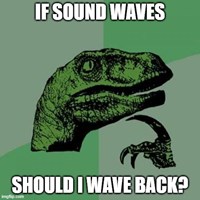Wave Vocabulary
Use this game to help you better understand the different parts and types of waves.
Create multiple-choice games on Wisc-Online and play them on our Chakalaka mobile app!
But that's not all! Explore educational games created by others. Simply search by category or enter agame code number and dive into a world of learning and fun.
Download the Chakalaka mobile app here:

Topics of this game:
- The distance between two corresponding points on successive waves. (m)
- The number of complete oscillations in one second. (Hz)
- The time it takes to do one oscillation. (s)
- The distance from the mean position to the extreme position (maximum or minimum points).
- Travel in a direction perpendicular to the particles of the medium.
- Travel in the same direction of motion as the particles of the medium.
- Repetitive movement through an equilibrium position of an object; maximum displacement on one side is equal to the maximum displacement on other side
- Highest point in a wave
- Lowest point in a wave
- A disturbance that travels through a medium from one location to another location transferring energy
- A substance or material that a wave can travel through (water, oil, rocks, etc).
- The position where maximum displacement occurs in a wave (either at a crest and trough!)
- The position where zero displacement occurs in a wave (minimum amplitude)
- Point where particles are closest together. It’s the equivalent of a crest in a transverse wave.
- Point where particles are farthest apart. It’s the equivalent of a trough in a transverse wave.
- The bouncing back of a wave as it meets a surface or boundary.
- The bending of waves as they pass from one medium to another.
- The bending of a wave as it passes an edge or an opening.
- Occurs when one object vibrating at the same natural frequency of a second object causes the second object to vibrate too.
- This type of wave does NOT require a medium to travel through.
- This type of wave requires a medium to travel through.
- Two or more waves combine so that the resulting wave is bigger than the original waves.
- Two or more waves combine so that the resulting wave is smaller than the original waves.
User comments are currently unavailable. We apologize for the inconvenience and are working to restore this feature as soon as possible.

